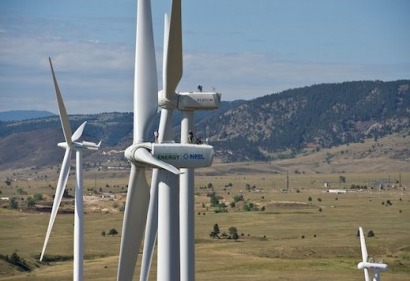
There is a strong case for the DOE to establish the Advancd Research Project Agency-Capital (ARPA-C) that will function to support the broader adoption and commercialization of renewable energy through support mechanisms, including credit enhancment and direct equity investments for capital market project aggregation warehouse facilities and securitization transaction.
While ARPA-E has been successful for the deveopment of new renewable technologies, the renewable sector can benefit from the expansion of ARPA-E to include capital to catalyze the breakthroughs for financial innovations. ARPA-C innovations can help bridge the funding gap that is a challenge to renewable energy growth by providing structural support for renewable energy projects to develop capital markets solutions.
Capital Markets structures can help to reduce the total installed cost of solar electricity significantly – and combined with other DOE initiatives could help make solar power cost-competitive without additionality subsidies. The Obama adminstration outlined in the March 20, 2011 publication “Blueprint for a secure energy future”, three major goals:
The roadmap outlined in the Administration’s plan to secure America’s Future Energy pleadges greater investments in clean energy by innovating our way to a clean energy future.
Investments in technology advances and fundamental research are an important part of the roadmap. But technological innovation is not enough – if we can’t get greater adoption of new technologies due to financial limitations. In bridging the financial chasm , we need to innovate in financial structures and solutions that will ensure the continued growth of the renewable enrgy sector and build on the progress made in recent years.
Structural credit enhancement offered through ARPA-C will spur financial innovation, bridge the transition to base support mechanisms with lower supoport (ITC at 10% and reduced MACRS), reduce the cost for DOE/Treasury, and increase the investments in clean energy infrastructure and help create American jobs.
Conclusion
The clean energy sector from wind to solar can benefit from a dedicated government policy program for structural credit support that can help launch innovative financial structures and engage the broader capital market’s investors. The White House’s stated goals to secure America’s energy supplies, reduce the cost of clean energy and job growth depends on policies that attractive private sector investors and capital markets solutions.
A robust policy that provides emerging clean energy sectors with structural credit support to develop critical mass of transaction and investors is critical to achieving the goals of a clean energy future and local high quality jobs.
[Editor’s Note: John Joshi is a member partner at ICE Capital Partners and a director at CapitalFusion Partners LLC, an advisory firm focused on renewable energy and infrastructure projects. He is also a member of the NREL sponsored working group “Solar Access Public Capital” as well as the CAP MLP Parity group. Mr. Joshi can be reached at jjoshi@capitalfusionpartners.com]

